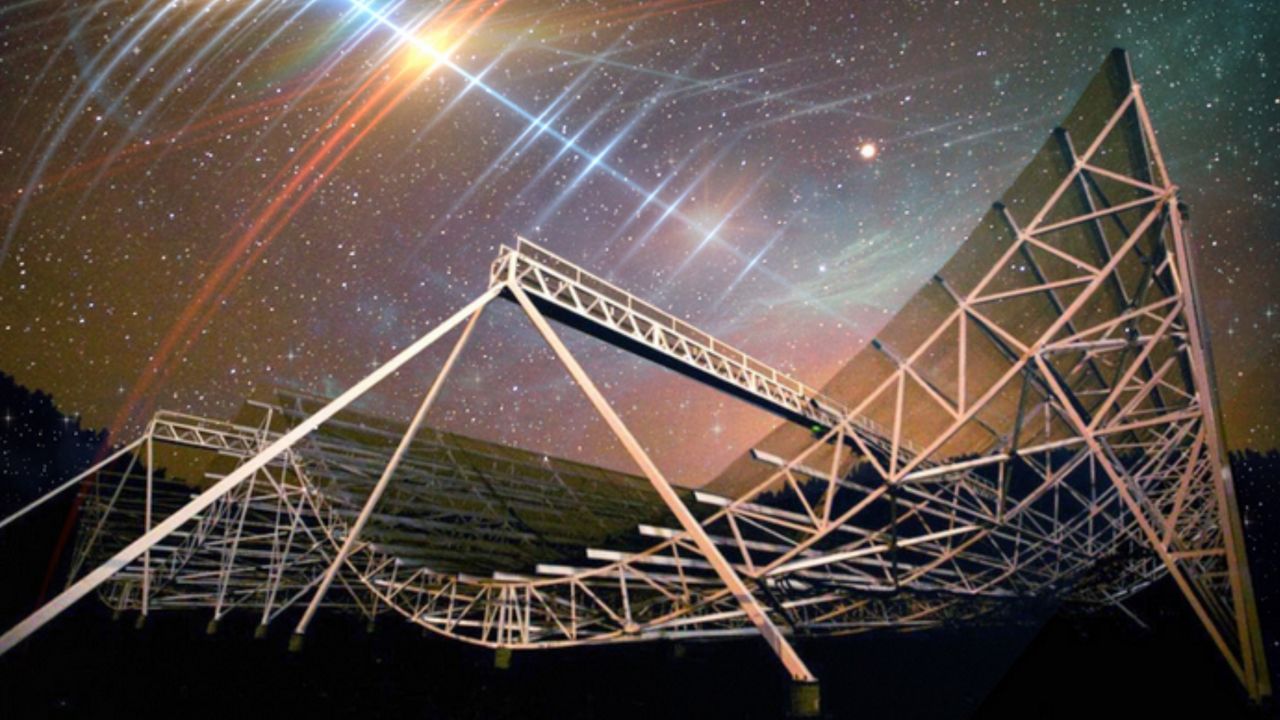A group of astronomers recently discovered a “strange and persistent radio signal” coming from deep space – and hope more information about the phenomenon can help answer still-unknown questions about the universe.
The signal was discovered by astronomers at the Massachusetts Institute of Technology and other locations with the Canada-based Copernicus Hyperspectral Imaging Mission for the Environment, or CHIME telescope, and was published in the journal Nature on Wednesday.
The signal is known as a fast radio burst, or FRB, and represents a flash of radio waves from a distant galaxy located billions of lightyears away from Earth.
The first-ever FRB was discovered in 2007 by astrophysicist Duncan Lorimer and a student as they were sifting through years of data from the Parkes Observatory in Australia. That FRB signal, which was actually emitted in 2001, is now colloquially known as the Lorimer Burst, and lasted less than five milliseconds.
In the decade-plus since the Lorimer Burst was identified, scientists have identified two kinds of galactic radio bursts: one-offs, which only occur once, and repeated signals, which emit slightly longer signals and repeat a semi-focused pattern. The origin of all FRBs, while coming from some object or area with a strong magnetic field, is still up for debate, and experts’ theories range from quickly-rotating stars to black holes – or the ever-persisting possibility of extraterrestrial intelligence.
But the most recent FRB signal is different from all those before it because it lasts around 3 seconds – approximately 1,000 times longer than any previously-identified signal. Within that 3-second window, scientists “detected bursts of radio waves that repeat every 0.2 seconds in a clear periodic pattern, similar to a beating heart,” making it both the longest-lasting FRB with the clearest pattern detected to date, researchers wrote in announcing the discovery.
The signal itself was made up of nine individual energy bursts each separated by just over 200 milliseconds.
The source of the most recent signal, designated FRB 20191221A, also remains unknown, though experts posit it could come from a radio pulsar or magnetar neutron star.
“There are not many things in the universe that emit strictly periodic signals,” Daniele Michilli, a postdoc in MIT’s Kavli Institute for Astrophysics and Space Research, wrote in a statement. “Examples that we know of in our own galaxy are radio pulsars and magnetars, which rotate and produce a beamed emission similar to a lighthouse. And we think this new signal could be a magnetar or pulsar on steroids.”
The signal itself was picked up on Dec. 21, 2019, and while it is similar to previous emissions detected within our galaxy, the FRB 20191221A singal is more than a million times brighter – meaning it likely came from a highly powerful source.
“We’ve seen some that live inside clouds that are very turbulent, while others look like they’re in clean environments,” Michilli said. “From the properties of this new signal, we can say that around this source, there’s a cloud of plasma that must be extremely turbulent.”
Michilli and his colleagues hope to detect more FRB signals from the same source in order to create an “astrophysical clock” to potentially measure how fast the universe is growing by tracking the frequency and changes in the bursts as it moves further away from our planet.
“This detection raises the question of what could cause this extreme signal that we’ve never seen before, and how can we use this signal to study the universe,” Michilli said. “Future telescopes promise to discover thousands of FRBs a month, and at that point we may find many more of these periodic signals.”



